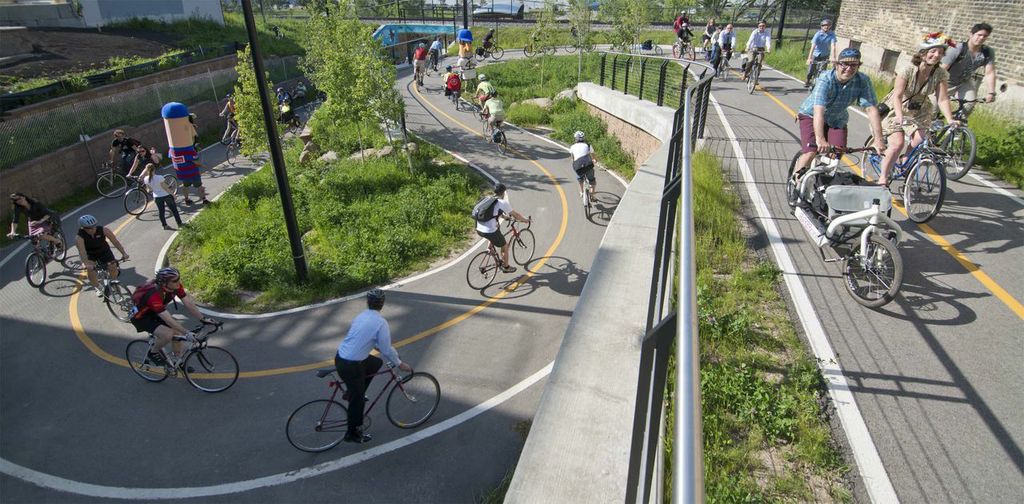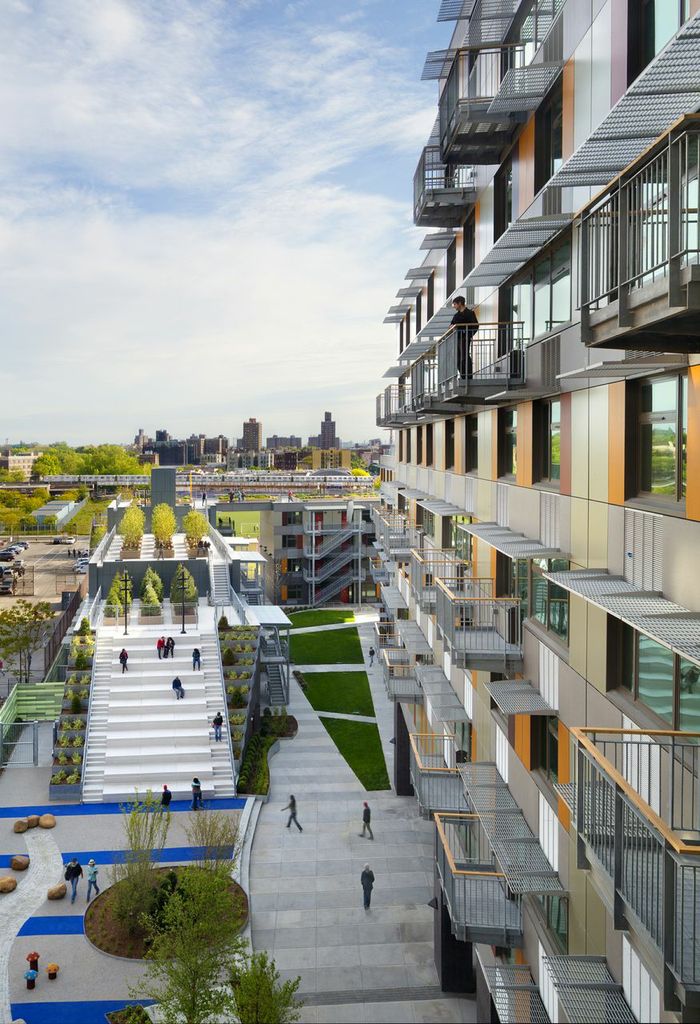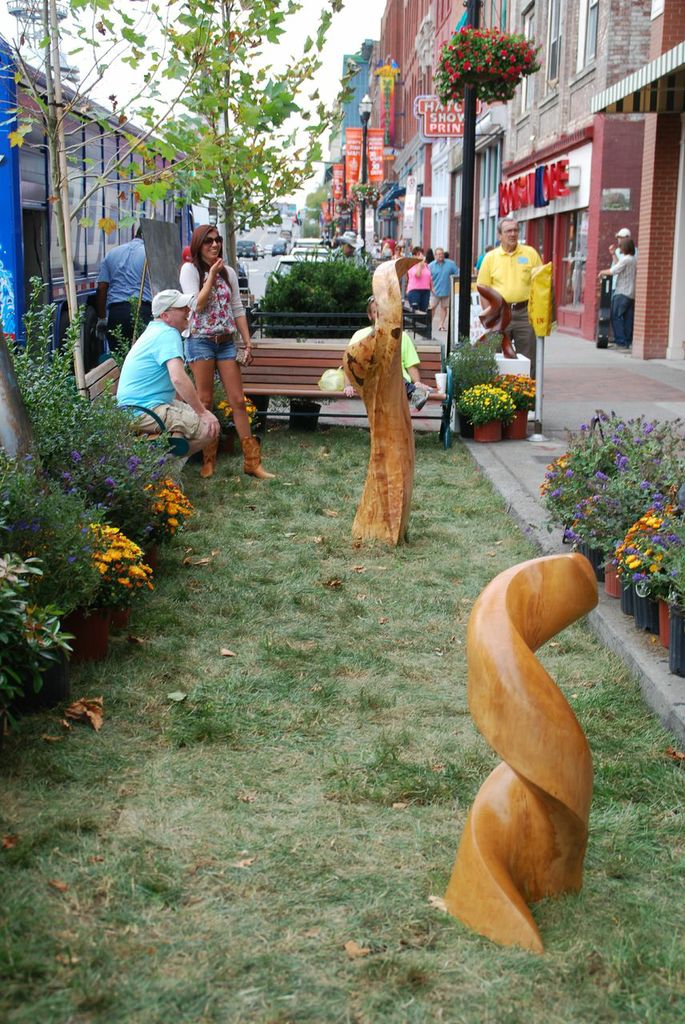
June 14, 2013
Let’s Shrink America’s Waistline and Grow the Economy
Let’s shrink America’s waistline and grow the economy
With a third of children overweight or obese, isn’t it time to look for bold solutions? So many places across this country are poorly designed: they encourage sedentary, not active lifestyles. Good design creates opportunities to walk without extra effort as part of our daily lives.
What if we built health-promoting communities, from city centers to suburbs? What would it take?
Scrap Traditional Models of Development
We need a design diet. In order to do this we need to examine traditional models of development and maybe not scrap them, but instead re-imagine the places where we live. Let’s not forget that sprawl is a post 1940’s model and not a historically immutable concept. What we need are options.
We need to rethink the idea that convenience is measured only in miles of driving in mind-numbing traffic, if you’re most of us, from our homes. We need to imagine or just remember from childhood that walking or riding a bike is, in fact, a better way of getting around to many places. We need to focus less on the size of our house and more on the quality of our homes, our families’ health, and our social lives. Design makes a difference, and it doesn’t have to cost more. Our money just needs to be better spent.

Valley Passage Bicyclists, Menomonee Valley
Courtesy Dave Schlabowske
The world is increasingly urbanizing at a scale unprecedented in human history. More than half of us worldwide live in urban areas and this will only grow to 70% by 2050. Young people are more focused on convenience and collaboration than on space and stuff. Study after study finds that Generation Y wants to live in cities and have more options. Robert Shiller of the Case-Shiller Home Price Index has discussed how renting continues to go up and younger adults are moving in to the city. GM has hired MTV to help convince this generation to drive. Times have changed and priorities are shifting.
There is clearly a movement afoot. These changes signify opportunities to create communities in both urban and suburban locales that react to realities. At the same time investments in walkability can help shrink the dollars we spend on healthcare and increase economic growth, with additional retail, restaurants, and services that people want nearby.
Innovative Partnership for Success
We need tested models for healthier metropolitan regions that align with these changes and meet our current challenges. In search of design and policy solutions, the American Institute of Architects (AIA) has joined with MIT’s Center for Advanced Urbanism on a Clinton Global Initiative Commitment – The Decade of Design: Health and Urbanism. We are willing to challenge long-held assumptions and focus on evidence-based results to make people healthier through the power of design.
To that end, a graduate course at MIT examines eight metropolitan regions in the U.S. Over the next ten years, the AIA will work with one of them as a laboratory for change – in collaboration with community leaders, local residents, public health officials, the business community, and other partners. This ambitious undertaking seeks to create the transformational change we need in building and retrofitting our communities for health across the country and globally.

Via Verde, New York City; project team: Phipps Rose Dattner Grimshaw
Courtesy David Sundberg/Esto
Healthier Buildings and Communities are Achievable
“Our bodies, our health, and buildings are forever connected. The links between architecture and well-being are richer than merely avoiding safety from injury; buildings can be, should be, agents of health – physical, mental, and social health. Good buildings and urban plans do precisely that. A bad structure removes daylight, damages air quality, allows water and noise intrusion, and leaves little room for what makes us happy – being with people we enjoy, good and healthy food, pleasing sight lines, and safety and security.” – Richard Jackson, MD MPH FAAP, foreword to Local Leaders: Healthier Communities Through Design
We spend a staggering one-fifth of our GDP on healthcare, three-quarters of it on chronic disease. The AIA’s report, Local Leaders: Healthier Communities Through Design lays out the current models that are helping to make American communities healthier, but there is so much more we all need to do. It is time to build partnerships that create buildings, neighborhoods, districts, cities, and metropolitan regions that help to stem this tide. Public health departments, architects, home builders, chambers of commerce, Republicans, and Democrats, we are all Americans, and we need to come together to push our economy forward and pull our waistlines in.
Let’s all just get up and walk: to the corner store to buy groceries, to work, to lunch, and anywhere close by. Let’s walk while we socialize and interact with others. Not only will this walking make us healthier, but it will help us stop and appreciate where we live, travel, and work that much more. The old adage, “stop and smell the roses,” is fitting in this instance with our increasingly fast-paced lives. A little bit of walking may help us slow down and enjoy our lives that much more. The short-cut is nice, but the long-cut can be better.
Imagine having more energy and more fun. We can all do this by getting in better shape. Let’s focus less on the need to move cars around and more on the need to move people around. Inviting street design, wider sidewalks with street furniture and cafes, streets that are bordered by buildings instead of parking lots, services that allow people to live, work, and have fun in the same neighborhood; these are all things that people want and desire.

Parking Day, Nashville
Courtesy Nashville Civic Design Center
Our Wallets and Well-Being
This isn’t a utopian fantasy pushed by any type of agenda, left, right, or center: it is an economic and medical reality. These are the types of places that people want and they consistently pay more to live in. In 34 metropolitan markets with an above average Walk Score homes command a premium of between $4,000 and $34,000.
Better design doesn’t mean that we need to get rid of single-family homes with lawns where our children can play. But, this model cannot be our only opportunity for the American Dream. Nor should our zip codes determine our life expectancy or opportunities in life. Shouldn’t people of all ages, backgrounds, incomes, and lifestyles be able to live in the same thriving communities? We need a mix of housing types that allow for people in all stages of life to live in the same community. This doesn’t just make us healthier, it creates more opportunities for businesses to grow and create the jobs that Americans want.
Good design can’t be an afterthought in the development process. It is the glue that creates great places. These places take many forms, from old established cities to beautifully designed new suburban communities. We need to ensure that holistic, systems level thinking about our buildings, streetscapes, and their complex relationships with each other and us are put first throughout the process. We want to create great places for people to raise families, enjoy their lives, and get up and walk. Everyone deserves good design.
Brooks Rainwater is the American Institute of Architect’s director of public policy. He’s focused on design centered policy meeting at the key intersection of cities, sustainability, and health. As a strong advocate for sustainability, Brooks frequently speaks and writes on the subject. He is also the lead author of Local Leaders, a national research study that examines green building policy, health and design, and the urban policy environment.





